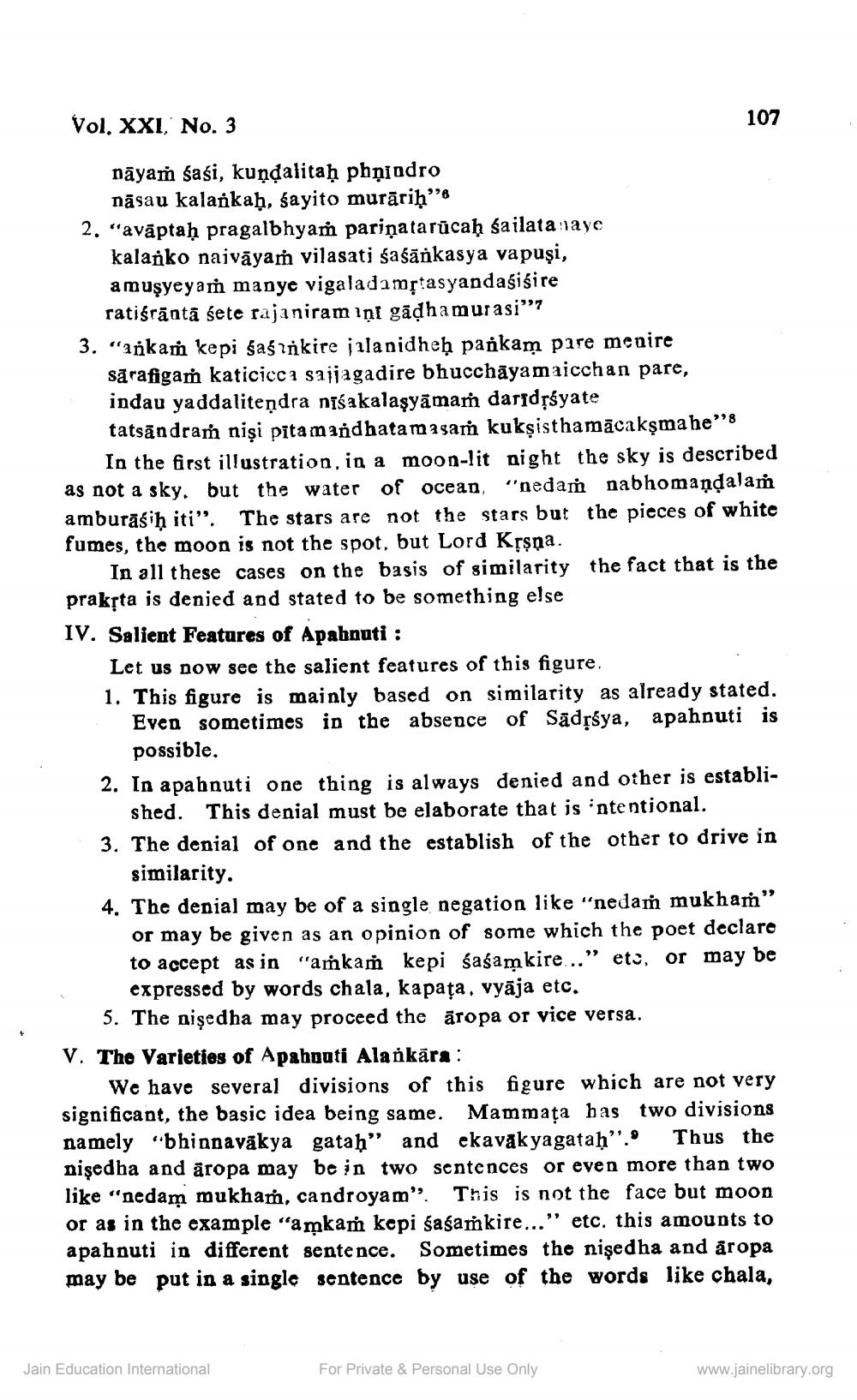________________
Vol. XXI, No. 3
107
nāyam sasi, kuņdalitaḥ phộiodro
nāsau kalankaḥ, śayito murāriḥ" 2. "avāptaḥ pragalbhyaṁ pariņatarūcaḥ śailata :laye
kalanko najvāyam vilasati saśāņkasya vapusi, amuşyeyam manye vigaladamstasyandaśiśire
ratiśrāatā śete rajaniram iņi gādhamurasi”? 3. "apkan kepi Śaś zrkire jalanidheḥ parkam pare menire
sārafigaṁ katicicci sajjagadire bhucchāyamaicchan pare, indau yaddalitendra nišakalaşyāmam dariděśyate tatsāndraṁ niși pitamaridhatam asam kuksisthamācakşmahe"8
In the first illustration, in a moon-lit night the sky is described as not a sky. but the water of ocean "nedam nabhomandalam amburāśiḥ iti”. The stars are not the stars but the pieces of white fumes, the moon is not the spot, but Lord Krsna.
In all these cases on the basis of similarity the fact that is the praksta is denied and stated to be something else IV. Salient Features of Apahnuti :
Let us now see the salient features of this figure. 1. This figure is mainly based on similarity as already stated.
Even sometimes in the absence of Saděśya, apahputi is
possible. 2. In apabnuti one thing is always denied and other is establi
shed. This denial must be elaborate that is intentional. 3. The denial of one and the establish of the other to drive in
similarity. 4. The denial may be of a single negation like "nedaṁ mukham"
or may be given as an opinion of some which the poet declare to accept as in "aṁkaṁ kepi sağam kire...” etj, or may be
expressed by words chala, kapata, vyāja etc.
5. The nisedha may proceed the āropa or vice versa. V. The Varieties of Apahnuti Alankāra :
We have several divisions of this figure which are not very significant, the basic idea being same. Mammata has two divisions namely"bhinnavākya gatah” and ekavákyagatah”.. Thus the nişedha and aropa may be in two sentences or even more than two like "nedam mukhan, candroyam”. This is not the face but moon or as in the example "amkaṁ kepi sasaṁkire..." etc. this amounts to apahnuti in different sentence. Sometimes the nişedha and äropa may be put in a single sentence by use of the words like chala,
Jain Education International
For Private & Personal Use Only
www.jainelibrary.org




